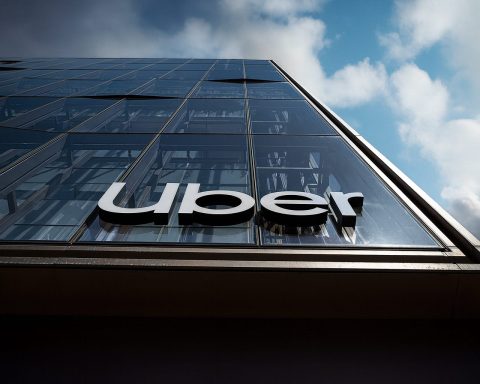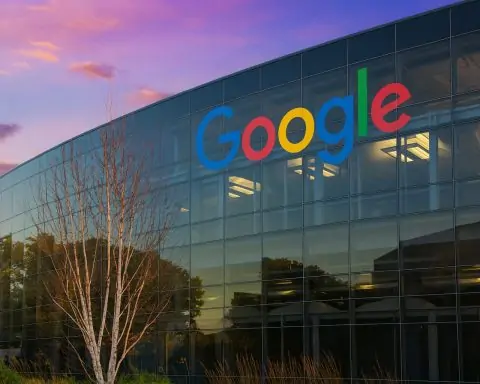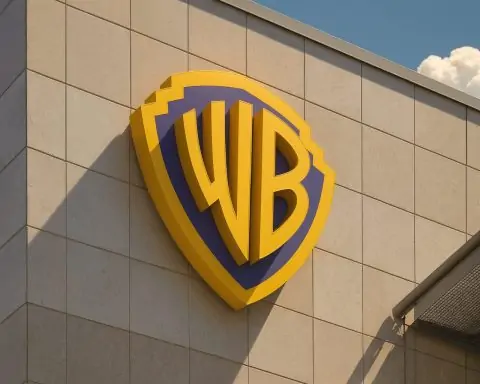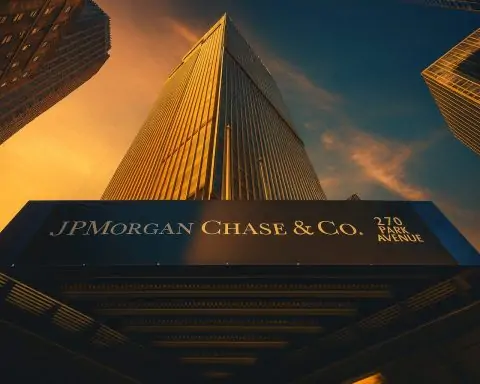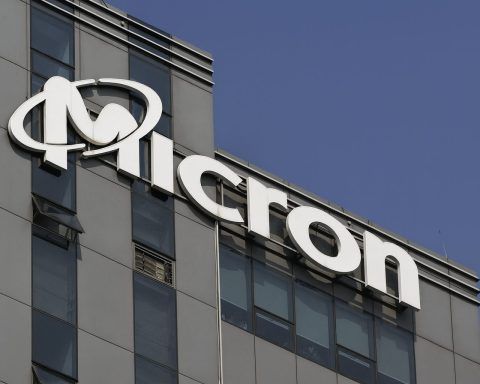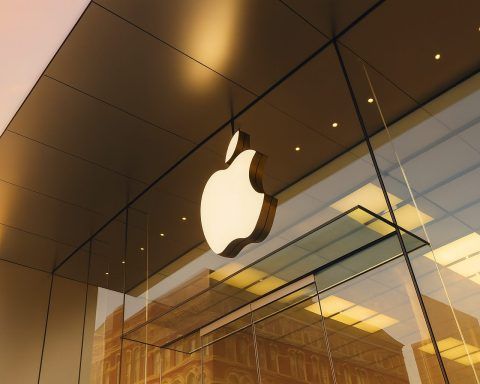- Billionaire investor Bill Ackman has unveiled a three-step plan he says could unlock roughly $300 billion in value for U.S. taxpayers by reshaping Fannie Mae and Freddie Mac. [1]
- Ackman argues a traditional IPO for Fannie and Freddie is “neither feasible nor desirable” right now, clashing with the Trump administration’s push to take the mortgage giants public as early as the end of 2025. [2]
- His proposal would convert the existing over‑the‑counter shares to a New York Stock Exchange listing, formally recognize that the 2008 bailout has been repaid, and give taxpayers a 79.9% equity stake via existing Treasury warrants. [3]
- Fannie Mae and Freddie Mac remain highly profitable and central to the U.S. housing system, backing roughly half of all U.S. residential mortgages and holding a combined guaranty book of about $4.1 trillion at Fannie Mae alone. [4]
- Shares of FNMA and FMCC have surged again this week, with Fannie Mae up about 7% and Freddie Mac up more than 8% on Tuesday, November 18, as investors digested the details of Ackman’s livestream presentation. [5]
What Happened — and Why It Matters Today
On November 18, 2025, Pershing Square Capital Management founder Bill Ackman finally pulled back the curtain on a long‑trailed proposal for mortgage giants Fannie Mae (FNMA) and Freddie Mac (FMCC).
In a livestreamed presentation and subsequent media appearances, Ackman laid out a three-step restructuring plan that he claims would not only end 17 years of government conservatorship but also deliver an estimated $300 billion windfall to U.S. taxpayers. [6]
At almost the same time, Reuters reported that Ackman now firmly opposes the Trump administration’s idea of selling a slice of Fannie and Freddie through a big Wall Street IPO. Instead, he wants to relist the existing OTC shares on the NYSE, which he says could be done in a matter of weeks and lead to a combined valuation of around $400 billion for the two companies. [7]
That puts Ackman on a collision course—at least in strategy, if not in ultimate goal—with President Donald Trump and Federal Housing Finance Agency (FHFA) Director Bill Pulte, who have repeatedly signaled they are “opportunistically evaluating” a public offering for Fannie and Freddie as early as late 2025. [8]
For investors watching FNMA and FMCC on November 19, the key question is no longer if Fannie and Freddie might leave conservatorship, but how and on whose terms.
Inside Bill Ackman’s Three‑Step, $300 Billion Plan
Ackman’s proposal, detailed on Fox Business and in his slide deck, is designed to look deceptively simple. [9]
1. Officially Declare the Bailout Repaid
Fannie Mae and Freddie Mac were placed into federal conservatorship during the 2008 financial crisis and received a combined bailout that ultimately totaled about $191 billion. Since then, the two mortgage giants have sent “hundreds of billions” of dollars in profits back to the U.S. Treasury—more than the amount injected during the rescue. [10]
Ackman’s first demand: the Treasury and FHFA should formally acknowledge that the bailout has been repaid in full, treating the years of profit sweeps as satisfaction of the crisis-era senior preferred stock.
2. Make Taxpayers Majority Owners
As part of the 2008 rescue, the government received warrants to buy up to 79.9% of the common stock of each company for a nominal price. Those warrants have never been exercised. [11]
Ackman wants Treasury to exercise those warrants now, turning U.S. taxpayers into the overwhelming majority owners of both Fannie and Freddie. That move would formalize what many critics argue is already true in practice: that the public has effectively recapitalized the GSEs and should own the upside.
3. Relist Fannie and Freddie on the NYSE
The final step would be to return Fannie Mae and Freddie Mac to a major stock exchange, ending their long stint as thinly traded over‑the‑counter securities.
Ackman argues that the companies now meet listing standards and that simply converting their current OTC listings to NYSE listings could be done within weeks, with no need for a traditional IPO roadshow. He estimates this could drive a combined market value of roughly $400 billion, leaving the Treasury’s 79.9% stake worth around $300 billion. [12]
In other words, under his plan:
- Existing common shareholders keep their economic exposure.
- Taxpayers receive a massive equity stake via the exercised warrants.
- The government can gradually sell down its stake into a deeper, more liquid market.
Why Ackman Says an IPO Is “Neither Feasible Nor Desirable” Right Now
Ackman’s plan lands just as the White House is exploring a more traditional Wall Street path.
According to FHFA Director Bill Pulte, the Trump administration has been studying structures to sell shares in Fannie and Freddie through an IPO by the end of 2025, including options such as merging the two companies into a single entity or creating a new holding company. [13]
Ackman is blunt: he thinks that approach is a dead end for now.
In his Tuesday presentation, he called a near‑term IPO “neither feasible nor desirable”, pointing to several key obstacles: [14]
- Complex transaction structures
- Merging Fannie and Freddie would require congressional approval, a politically fraught process that could drag on for years. [15]
- Creating a government-owned holding company to sell shares is likely barred by existing rules that prevent such vehicles.
- Legal and regulatory constraints
- Using a joint venture as a listing vehicle—an idea reportedly floated in some discussions—would be extremely complex, requiring asset transfers and new regulatory frameworks. [16]
- Market and execution risk
- A mega‑IPO of two systemically important, politically charged mortgage giants would demand perfect timing, pristine disclosures, and enormous underwriting capacity—hardly a trivial task in a volatile macro environment.
Ackman’s bet is that relisting existing shares sidesteps all of that while still delivering what both he and the administration say they want: privatization, market discipline, and meaningful upside for taxpayers.
The Financial Muscle Behind Fannie Mae and Freddie Mac
Part of what makes the Ackman debate so intense is simple: Fannie Mae and Freddie Mac are no longer sick patients. They’re hugely profitable, capital‑rich entities at the center of the housing system.
Fannie Mae’s Latest Numbers
According to Fannie Mae’s own third‑quarter 2025 results: [17]
- Net income for Q3 2025 was $3.9 billion, up from $3.3 billion in the prior quarter.
- Net revenues were $7.3 billion, driven largely by guaranty fees on a $4.1 trillion guaranty book of business.
- Net worth rose to about $105.5 billion as of September 30, 2025. [18]
Serious delinquency rates across its single‑family and multifamily portfolios remain well below 1%, indicating relatively healthy borrower performance despite high interest rates. [19]
A Massive Footprint in U.S. Housing
Fox Business notes that Fannie and Freddie together now own or back roughly half of all U.S. residential mortgages, representing around $12 trillion in outstanding debt. [20]
That enormous footprint explains why every policy tweak—from capital rules to IPO talk—ripples through the mortgage market, investor portfolios, and household balance sheets.
Multifamily Lending Caps Are In Focus
On the multifamily side, FHFA last year raised 2025 lending caps for each GSE to $73 billion, allowing them to buy up to $146 billion in multifamily loans next year. Industry leaders now expect both agencies to hit those caps, creating queues as deals stack up toward year‑end. [21]
Those strong pipelines underscore why the market sees Fannie and Freddie as growth stories rather than rescue cases—and why activists like Ackman argue that current valuations undervalue the underlying franchises.
How the Market Is Reacting: FNMA and FMCC Surge Again
Investors have been positioning around the “end of conservatorship” story for months, but Ackman’s livestream and the latest headlines have given the trade fresh momentum.
Data from StockAnalysis and other price trackers show that on Tuesday, November 18: [22]
- Fannie Mae (FNMA) closed at about $10.01, up roughly 7.1% on the day, after trading between $8.61 and $10.13.
- Freddie Mac (FMCC) closed near $9.02, up about 8.3%, following a similarly volatile session. [23]
Over the past year, FNMA has delivered a gain of well over 100%, with a 52‑week range of about $2.07 to $15.99, according to market data providers and retail brokerage platforms. [24]
Before the latest spike, Barchart data showed FNMA already up around 185% year‑to‑date, reflecting both Ackman’s activism and growing expectations of privatization. [25]
In short, markets are pricing in a high‑stakes political and financial endgame—but not yet a done deal.
The Trump Administration’s Broader Housing Agenda: IPOs and a 50‑Year Mortgage
The fight over Fannie and Freddie doesn’t happen in isolation. It’s part of a broader housing‑policy push from the Trump White House and FHFA Director Bill Pulte.
An Aggressive IPO Timeline
Pulte has publicly said the administration is evaluating a public offering for Fannie and Freddie as soon as the end of 2025, framing it as a way to finally exit conservatorship after 17 years. [26]
Trump has reportedly held meetings with major bank CEOs to explore how such an offering might be structured and marketed. [27]
Ackman doesn’t object to the end goal—privatization and taxpayer upside—but he believes forcing an IPO structure could delay or derail the process, given the legal and political hurdles.
The Controversial 50‑Year Mortgage Idea
At the same time, the White House is floating a 50‑year mortgage as a potential tool to ease affordability pressures. An Associated Press analysis, circulated via MarketBeat, notes that while a 50‑year term can modestly lower monthly payments, it dramatically extends the total interest paid and slows equity buildup—by an estimated hundreds of thousands of dollars over the life of a typical loan. [28]
Pulte has called the 50‑year mortgage a “complete game changer,” but critics warn it doesn’t fix core issues like limited housing supply and high construction costs. They also highlight an important technical hurdle: Fannie Mae and Freddie Mac generally cannot insure loans longer than 30 years without congressional changes, limiting how widely such products could be adopted. [29]
Taken together, the administration’s IPO ambitions and ultra‑long mortgage proposal show just how central Fannie and Freddie are to the Trump housing agenda—and why Ackman’s competing blueprint is drawing so much attention.
What It Means for Homebuyers and the Mortgage Market
While the debate may look like an inside‑Wall‑Street fight over valuation and deal mechanics, ordinary borrowers have a lot at stake.
- Mortgage Rates and Spreads
- Ackman argues that his plan minimizes the risk of mortgage spreads widening, because it avoids disruptive structural experiments like mergers or complex listing vehicles. [30]
- A messy or delayed IPO could increase uncertainty around how the GSEs are capitalized and regulated, potentially nudging mortgage rates higher relative to Treasuries.
- Credit Availability
- With Fannie and Freddie likely to hit multifamily lending caps in 2025, access to financing for apartment projects and affordable housing is already tight. [31]
- A smooth, predictable exit from conservatorship could help maintain investor confidence in agency mortgage‑backed securities, supporting continued lending.
- Regulatory and Political Risk
- Both paths—Ackman’s NYSE relisting and the administration’s IPO concept—depend heavily on regulatory sign‑off and political will.
- Recent controversies, including investigations into governance and data‑handling at Fannie Mae, underscore how quickly policy risk can flare up in this space. [32]
For now, nothing about the mortgage terms available to borrowers has changed because of Ackman’s plan alone. But how Washington chooses to restructure Fannie and Freddie will shape the cost and availability of home loans for years to come.
What Investors Should Watch Next
For holders of FNMA and FMCC—and for anyone considering jumping in—several near‑term catalysts are worth tracking.
1. Treasury and FHFA’s Response
The most important question: Will Treasury and FHFA publicly engage with Ackman’s three‑step blueprint?
- Any statement acknowledging the bailout as “repaid” or signaling openness to exercising the 79.9% warrants would be a major market event. [33]
- Conversely, a reaffirmation of a traditional IPO or merger plan could heighten volatility if investors see that route as slower or riskier.
2. Congressional Signals
Because some options—especially a merger of Fannie and Freddie—would require congressional approval, early comments from key committee chairs and housing‑policy leaders will matter. [34]
Even if Ackman’s plan avoids formal legislation, lawmakers may weigh in on capital standards, consumer protections, and the future of the 30‑year mortgage.
3. Capital Rules and Required Buffers
Ackman wants to see the current 4.5% capital requirement on guarantees reduced, arguing that it’s overly conservative and depresses valuations. [35]
Changes to that rule—one way or the other—could heavily influence:
- How much additional capital the GSEs must raise.
- How quickly they can realistically exit conservatorship.
- The earnings power available to common shareholders.
4. Ongoing Earnings and Credit Quality
Even amid the policy drama, fundamentals matter:
- Fannie’s streak of 31 consecutive profitable quarters, and its $3.9 billion Q3 profit, show the underlying franchise remains strong. [36]
- Any deterioration in delinquency rates, capital levels, or housing‑market conditions could change the calculus for both policymakers and investors.
Bottom Line: A Political Stock With Real Cash Flows
As of November 19, 2025, Fannie Mae and Freddie Mac sit at the intersection of politics, policy, and profit:
- Bill Ackman is offering a rapid, technically straightforward path out of conservatorship that heavily rewards both taxpayers and existing shareholders.
- The Trump administration is pursuing a higher‑profile IPO vision that could reshape the housing‑finance system but faces daunting legal and logistical challenges.
- Underneath the noise, the GSEs continue to generate billions in quarterly earnings and support a multi‑trillion‑dollar mortgage market. [37]
For investors, FNMA and FMCC remain deeply speculative, policy‑driven trades. The upside could be enormous if a privatization plan close to Ackman’s vision is adopted—but so are the risks if Washington takes a different direction, delays action, or imposes harsh capital and governance terms.
Nothing is settled yet. But after this week’s developments, one thing is clear: the endgame for Fannie Mae and Freddie Mac is finally coming into view, and November 18–19, 2025 will likely be remembered as a turning point in that long saga.
This article is for informational purposes only and does not constitute financial, legal, or investment advice. Always conduct your own research or consult a professional advisor before making investment decisions.
References
1. www.foxbusiness.com, 2. www.reuters.com, 3. www.foxbusiness.com, 4. www.foxbusiness.com, 5. stockanalysis.com, 6. www.foxbusiness.com, 7. www.reuters.com, 8. www.reuters.com, 9. www.foxbusiness.com, 10. www.foxbusiness.com, 11. www.foxbusiness.com, 12. www.reuters.com, 13. www.reuters.com, 14. www.reuters.com, 15. www.reuters.com, 16. www.reuters.com, 17. www.fanniemae.com, 18. www.fanniemae.com, 19. www.barchart.com, 20. www.foxbusiness.com, 21. www.multifamilydive.com, 22. stockanalysis.com, 23. markets.financialcontent.com, 24. www.investing.com, 25. www.barchart.com, 26. www.investing.com, 27. www.reuters.com, 28. www.marketbeat.com, 29. www.marketbeat.com, 30. www.barchart.com, 31. www.multifamilydive.com, 32. www.marketbeat.com, 33. www.foxbusiness.com, 34. www.reuters.com, 35. www.reuters.com, 36. www.fanniemae.com, 37. www.fanniemae.com

